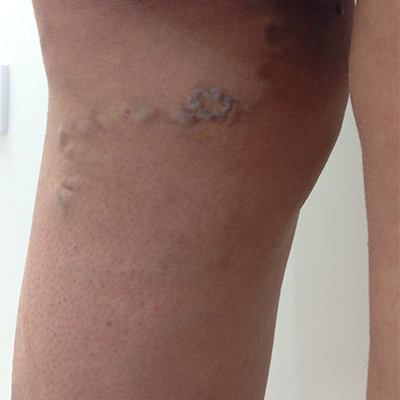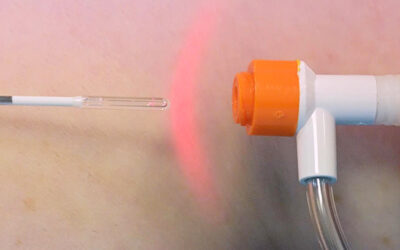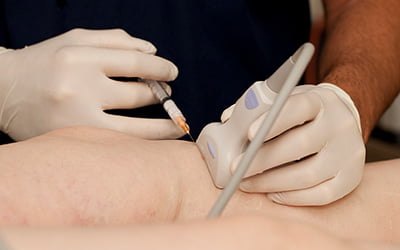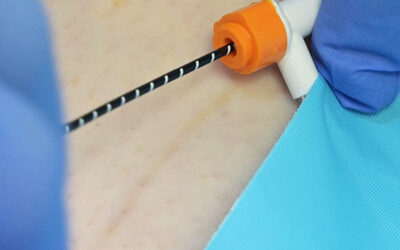Pelvic, Vaginal, and Vulvar Varicose Veins
Pelvic, vaginal, and vulvar varicose veins occur in and around the groin area and can be worsened (exacerbated) following previous treatments including laser or radio frequency ablation, sclerotherapy or surgical ligation (with or without stripping) of the sapheno-femoral junction or can also occur after multiple pregnancies, and in some cases after one pregnancy. They can be present with or without accompanying symptoms.

Can Pelvic, Vaginal, and Vulvar Varicose Veins be Treated?
Pelvic, vaginal and vulval varicose veins can be treated quite effectively with ultrasound guided sclerotherapy. This procedure is performed by experienced senior phlebologists. It requires the use of advanced ultrasound equipment and careful isolation of the pelvic veins. As with lower leg varicose veins, the treated veins will undergo a hardening process referred to as sclerosis and will eventually get absorbed by the body. Once these veins have been treated, any congestion or symptoms associated with the build-up of blood within them, should resolve.
Can Varicose Veins in the Groin Region Occur in Men?
Yes. It is not just women who suffer from varicose veins of the groin area. Doctors report men can also suffer from pelvic varicose veins.
Getting a Diagnosis
In many patients, pelvic, vaginal, and vulvar varicose veins will be present without obvious symptoms, but pelvic varicose veins are easily identified by duplex ultrasound investigation. This involves externally scanning the upper thigh and groin area, as well as the perineum and vulvar area. This is done with a high-frequency ultrasound probe. In order to properly diagnose any reflux inside of deeper veins, additional specialist scans should be performed.
For some cases, the phlebologist may need to trace veins up into the uterine and ovarian areas to identify their origin. These might require the vascular sonographer to perform an abdominal, intra-vaginal or internal ultrasound examination at a separate visit.
For patients receiving treatment for abnormal veins in the legs, screening for varicose veins in the area of the groin could help identify the source of the problem veins in the lower legs.
A Helpful Grading System Used for Diagnosing Vulvar Varicose Veins
Grade 0 (usual)
No venous reflux or varicosities visible in the vulva.
Grade 1 (common)
Following an ultrasound, there will be proven reflux in vulvar veins.
Grade 2 (uncommon)
As well as reflux in vulvar veins being diagnosed in an ultrasound, you will also see varicosities in the lower vagina and through the mucosa of the inner labia.
Grade 3 (very uncommon)
You will see visible varicosities on the skin of the outer labia majora whilst standing.
Grade 4 (rare)
Upon standing, you will see extensive varicosities of the labia, as well as general distortion of the gross anatomy of the area.

When Should You Seek Treatment?
Regardless of the location of the varicose veins, whether in the pelvic region or in the thighs, legs or ankles, getting the appropriate treatment from an experienced phlebologist is important. Treatment will help relieve symptoms and prevent further deterioration of vein disease.
For patients who are currently pregnant, it is appropriate to recommend treatment between pregnancies. Treatment during pregnancy is not recommended. In our experience, varicose veins in the pelvis and legs should be treated before the next pregnancy to avoid deterioration with subsequent pregnancies.
Preparation for Pelvic Vein Ultrasound Scan
At your initial consultation, the vascular sonographer and the phlebologist, will examine and scan the upper thigh/groin area and sometimes the pelvic region if there are veins present in that area. A groin scan forms an integral part of the scanning process and is important to ensure a complete and thorough examination. The diagnosis must be as accurate as possible to ensure that the correct treatment is provided. Leg and groin scans are performed with the patient standing on a special examination step and their leg externally rotated. We strongly advise our patients wear modest, comfortable underwear to help facilitate the scan.
How We Treat Pelvic, Vaginal, and Vulvar Varicose Veins
Endovenous Laser Ablation (EVLA)
Under ultrasound guidance, a laser fibre is placed into the abnormal vein through a tiny incision. When the laser is activated and the fibre is slowly removed, this produces a reaction in the vein wall along the treated section, resulting in collapse and sclerosis of the vein wall with minimal discomfort.
Ultrasound Guided Sclerotherapy
Ultrasound Guided Sclerotherapy is a highly specialised procedure involving injecting a sclerosant solution into the abnormal veins using ultrasound guidance, causing the vein wall to collapse. The veins dissolve and disappear as the body gradually absorbs them.
Radiofrequency Ablation
Radiofrequency ablation (RFA) relies on thermal (heat based) damage to the vein, that leads to immediate closure of the vein. Once the vein is treated by radiofrequency ablation, it will gradually undergo complete absorption by the body and disappear over time.

Your vein surgeon will choose the treatment that perfectly suits your veins.
Medicare Rebate & Costs
The cost of treating varicose veins depends on severity of the veins as well as which treatment is used. We discuss these costs in detail at your initial consultation.
A Medicare rebate is claimable on all varicose vein procedures, except the most superficial spider veins.

What to expect
Learn all about your first appointment, what's included, and how much it will cost.



